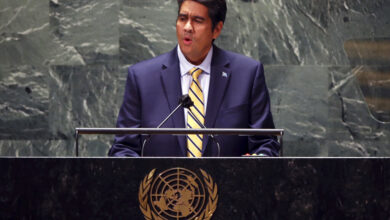South Asia should leverage urbanization, says a World Bank report

FORUM Staff
South Asia could do more to enhance financial success and quality of life in its cities, according to a recent report by the World Bank. Nations in this region are not fully using urbanization’s potential “to transform their economies to join the ranks of richer nations in prosperity and livability,” the 2015 report found.
Although urban areas offer huge opportunities to those looking for work, education and a better quality of living, South Asian nations’ urbanization “has been messy and hidden,” said the report. This is “symptomatic of the failure to adequately address congestion constraints that arise from the pressure of urban population,” according to the report: “Leveraging Urbanization in South Asia: Managing Spatial Transformation for Prosperity and Livability.” The growth was messy in terms of “the widespread prevalence of slums” and hidden in that national statistics typically don’t factor portions of the population living in areas with urban characteristics, the report said.
About 30 percent of South Asia’s 1.5 billion population lives in urban areas, the report said. However, its cities have increased at a pace roughly twice as fast in area as they have increased in population. This means average population densities in cities are decreasing and contributing to urban sprawl, the report said.
Urbanization has improved South Asia’s gross domestic product (GDP) per capita and lifted many out of poverty. The region’s cities added 130 million people, more than the population of Japan, between 2000 and 2009, the study said. During roughly the same period, the average GDP per capita has increased by nearly 56 percent from 2000 to 2012, from U.S. $2,560 to U.S. $4,000. Absolute poverty declined from 1 in 2 people in 1999 to 1 in 3 people in 2010 living on less than U.S. $1.25 a day, the study found.
Experts forecast that South Asia’s urban population could grow by another 260 million people by 2030. “Urbanization can lead to sustainable growth by increasing productivity, allowing innovation and new ideas to emerge,” said Sri Mulyani Indrawati, World Bank managing director and chief operating officer, on releasing the report in September 2015. However, “countries must successfully address the challenges posed by urbanization. Growing urban populations put pressure on a city’s infrastructure; they increase the demand for basic services, land and housing, and they add stress to the environment.”
South Asian policymakers must implement difficult and suitable reforms to change the path of development, the report said for “making the region’s cities prosperous and livable.”
The region’s multicity agglomerations or continuous urbanized areas offer a chance for increased agglomeration of economies, which can be enhanced by better coordination among local government entities, the report said. “Policies are also required to improve the ways in which cities are connected and planned, the working of land and housing markets, and cities’ resilience to natural disasters and the effects of climate change,” the report said.




